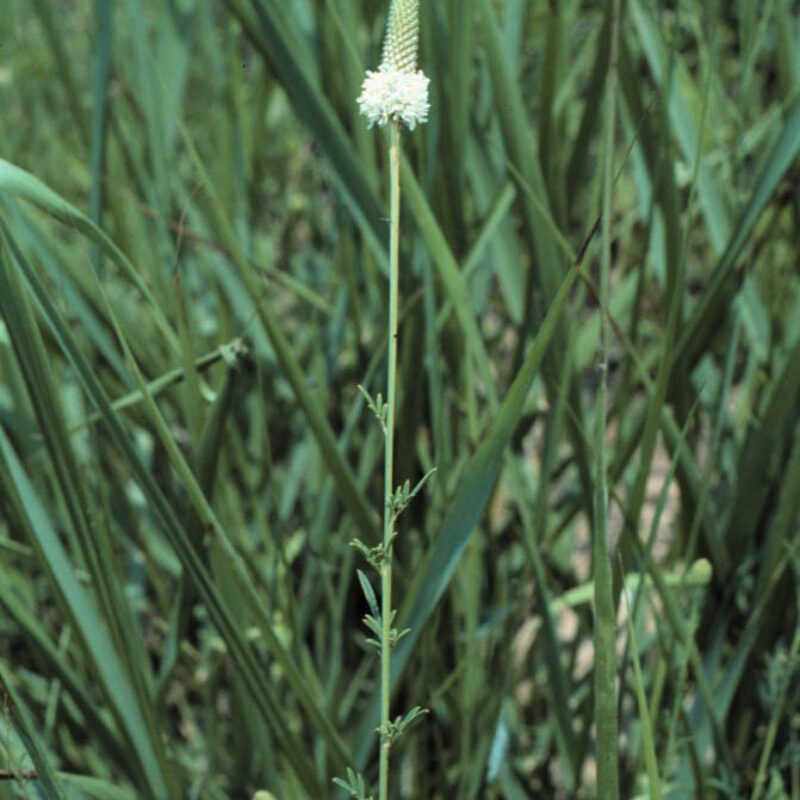White Prairie CloverDalea candida
White Prairie Clover is a legume species from the pea family with white flowers that gradually fill up its cylindrical base. A favorite of pollinators.
USDA symbol: DACA7
General Information
| Plant Type | Forb |
|---|---|
| Height | 1 to 3 feet |
| Light Exposure | Sun |
| Soil Moisture | Dry |
| Bloom Color | White |

Tolerances
| Flooding / Inundation Tolerance | Low |
|---|---|
| General Resilience | 7 |
| Salt Tolerance | Low |
| Stress Tolerance | Drought Tolerant |
Pollinator Value: High
| Bloom Months | June to August |
|---|---|
| Larval Host of | Bees, Moths |
| Specific Pollinators Hosted | Chlorochlamys chloroleucaria, Numerous bee species |
| Pollinator Benefit | Insect Pollinated, Provides Nectar, Supports Generalists |
Project Planning
| Project Type | Boulevard, Shoreline Buffer |
|---|---|
| Coefficient of Conservatism | 8 |
| Herbivore Sensitivity | High |
| Lifespan | Perennial |
| Rate of Spread | Slow |
| Soil Stabilization | Deep |
| Vegetative Reproduction | Clonal |
Range
| County | Anoka, Becker, Beltrami, Benton, Big Stone, Brown, Carver, Cass, Chippewa, Chisago, Clay, Clearwater, Cottonwood, Crow Wing, Dakota, Douglas, Faribault, Fillmore, Freeborn, Goodhue, Grant, Hennepin, Houston, Hubbard, Isanti, Jackson, Kandiyohi, Kittson, Lac qui Parle, Lincoln, Lyon, Mahnomen, Marshall, McLeod, Meeker, Mille Lacs, Morrison, Mower, Murray, Nicollet, Nobles, Norman, Olmsted, Otter Tail, Pennington, Pipestone, Polk, Pope, Ramsey, Redwood, Renville, Rice, Rock, Roseau, Sherburne, St. Louis, Stearns, Steele, Stevens, Swift, Todd, Traverse, Wabasha, Wadena, Washington, Wilkin, Winona, Wright, Yellow Medicine |
|---|---|
| Ecoregion | Driftless Area, Lake Agassiz Plain, North Central Hardwood Forests, Northern Glaciated Plains, Northern Lakes and Forests, Northern Minnesota Wetlands, Western Cornbelt Plains |
| Approximate Eco Province | Eastern Broadleaf Forest, Laurentian Mixed Forest, Prairie Parkland, Tallgrass Aspen Parklands |
